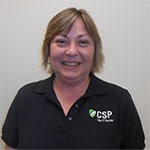1310 Nowell Road
Raleigh, NC 27607
1310 Nowell Road
Raleigh, NC 27607
Existing CSP Client: (919) 424-2060
SALES: (919) 420-3231

Limited wireless networks are just what they sound like: small networks with limited range that cannot handle the demands of, say, the entire population of a large high school full of students, faculty, and staff all carrying one to three personal devices. Small networks cannot handle the bandwidth demand from multiple classrooms of students streaming videos at approximately the same time while all classrooms report their attendance at the top of the hour and district emails regarding cybersecurity threats go out.

Potential Small Wireless Network Areas:
Small networks range from a small administration office with a skeleton staff to several offices, connected printers and copiers, and a couple of dozen devices spread across a tiny school (and that’s stretching it to its limits). Anything more than that and a larger network is necessary.
What is a wireless network?
Wireless networks, or Wi-Fi networks, are networked radio signals that relay information (data) from the internet to devices (laptops, desktops, mobile phones, tablets, etc.). Over the years they have improved to the point that they are as secure, reliable, and fast as most wired networks.
Advantages Of A Small Network
Small schools or contained school communities can benefit by having a faster connection on the limited space. It costs less to install and maintain a small network as well, and its general exclusivity makes it a more secure method to share and receive data.
Certain types of information or use are better on a wired connection. So one of the advantages of using a limited, small wireless network is that in an office with equipment better left on a wired connection, such as a dedicated printer or copier, wireless can be for everyone else, or for other appropriate devices as you see fit.
Where To Start
Like with any project, you must determine the scope, budget, and overall goals. What is this network supposed to be able to do? How many devices should it be able to support, and at what bandwidth? You need to know what your goals are, what the scope of the project is, and the budgeting limitations.
You’ll want your main office, the library, and maybe a small computer lab or mobile lab (cart with laptops) to have Wi-Fi. Any other computers would need to be wired or else you’d have to get a much larger system.
This small Wi-Fi network can be a separate network from the rest of the school, to separate
one network from the other for security or speed purposes, or it can be used in a smaller school, or only by a select group of people.
What Should The Small Network Be Able To Handle?
Think about the demands that each individual might put onto the network. Employees, teachers, students , and guests may be on the network if that’s what your school decides, and they will each have their own needs. In an elementary school, very few students will have their own personal devices on them at all times, and even fewer will be using internet access on those devices. This is why the small network might be all right for a small elementary school but not appropriate for a secondary school, where students often have two-three devices.
Account for at least two devices per employee on the network. They will likely have personal devices such as laptops, smartphones, or tablets that they may want to use in addition to work-provided devices.
Once you have the scope down, you can move on to the next phase: choosing your equipment.
You’ll need:
In Conclusion
If you have a small school or limited wireless needs to think about, go for the smaller wireless network. It offers convenient connectivity and could also be a way to test the waters on a wireless set-up. Further, elementary schools with fewer unknown devices being brought in could benefit from not wasting money on a monster system too large for the needs of the school. No matter what you decide, make sure that you properly measure the resources that you will need.

Always at your service to provide the highest level of quality support to our customers.

Anthony Firth Client Engineer

“I’m passionate about building and fostering relationships, and finding solutions for success.”

Michael Koenig Client Account Manager

“I help clients stabilize and grow their IT infrastructure so they can focus on growing their core business.”

Josh Wilshire Systems Engineer Team Lead

“I strive to provide the highest level of quality service to our customers.”

Tommy Williams Sr. Hardware Engineer

“I’m driven by the steadfast belief that technology must serve as a business enabler. This mantra has driven 21
Years of successful partnerships.”

Stephen Riddick VP Sales & Marketing

“CSP doesn’t succeed unless your company succeeds.”

Stephen Allen Inventory Manager

“Through my intuition and genuine concern to help others I have built long-lasting relationships with our customers, co-workers and business partners.”

Scott Forbes VP Support Services

“Every day, I work with clients to help plan the future of their businesses.”

Michael Bowman vCIO

“Your IT problems become our IT solutions.”

Mark McLemore Project Engineer

“Managing internal and external operations to ensure that CSP provides quality and reliable customer service .”

Margie Figueroa Business Manager

“Providing quality internal and externals financial support to our customers and accounting support to CSP.”

Katie Steiglitz Accounting Administrator

“Some call me the CEO. I call myself the Cheerleader for an awesome team!”

William B. Riddick Founder & CEO

“CSP is here to assist you with your IT needs.”

Beth Wylie Inside Sales Manager




On What Questions You Need To Ask Before Signing Any Agreement.
"*" indicates required fields

Raleigh IT Support Company and IT Services Provider | CSP Inc.
1310 Nowell Rd,
Raleigh, NC 27607
Existing CSP Client: (919) 424-2060
SALES: (919) 420-3231
Receive email updates and informative marketing materials by subscribing to our newsletter.
"*" indicates required fields